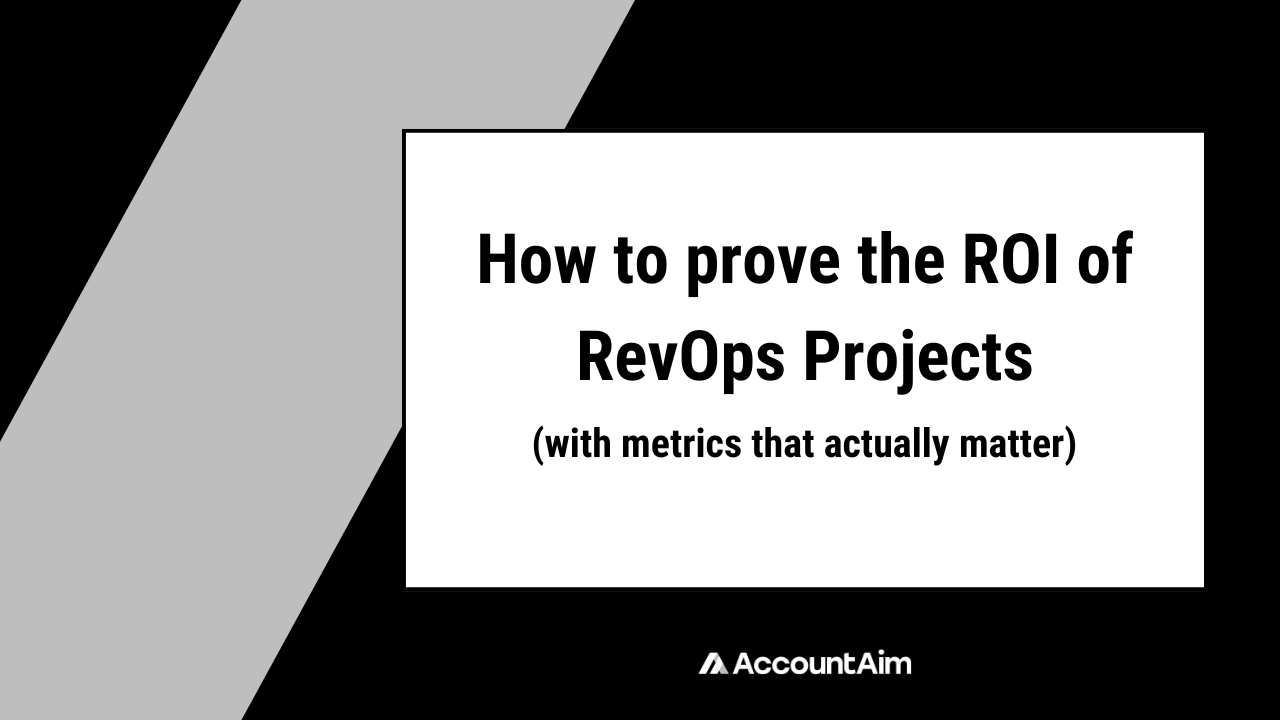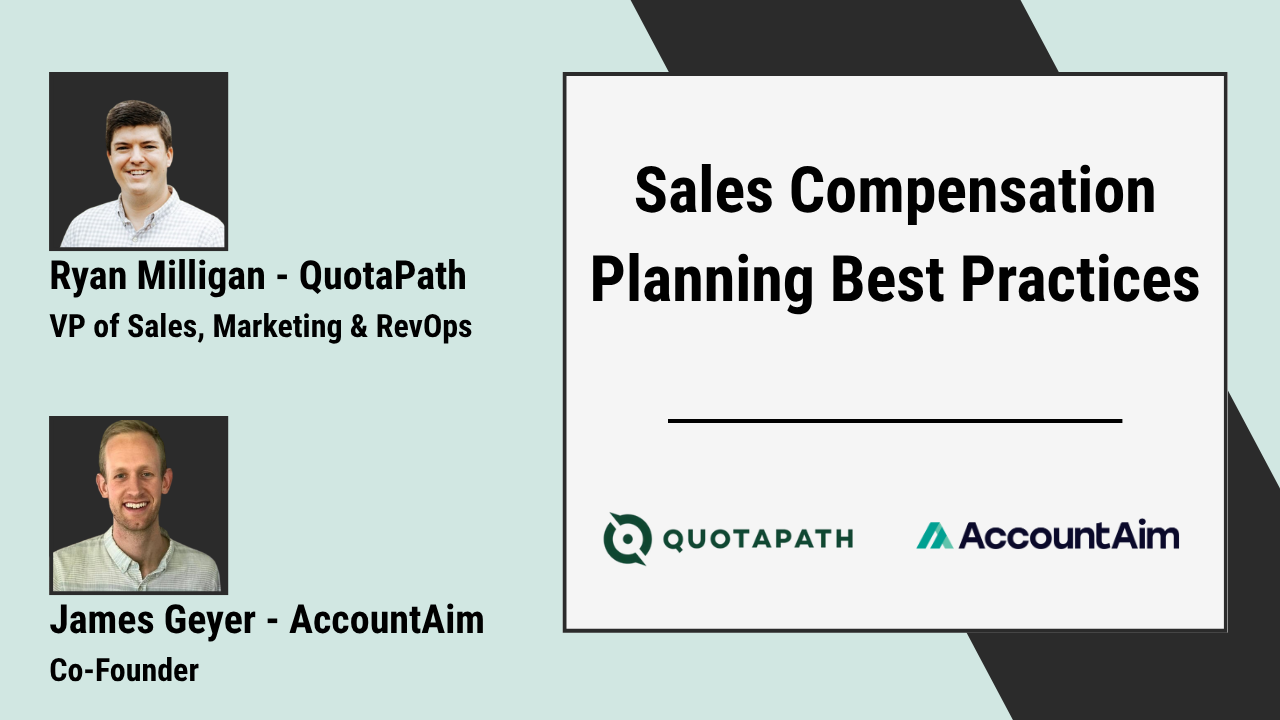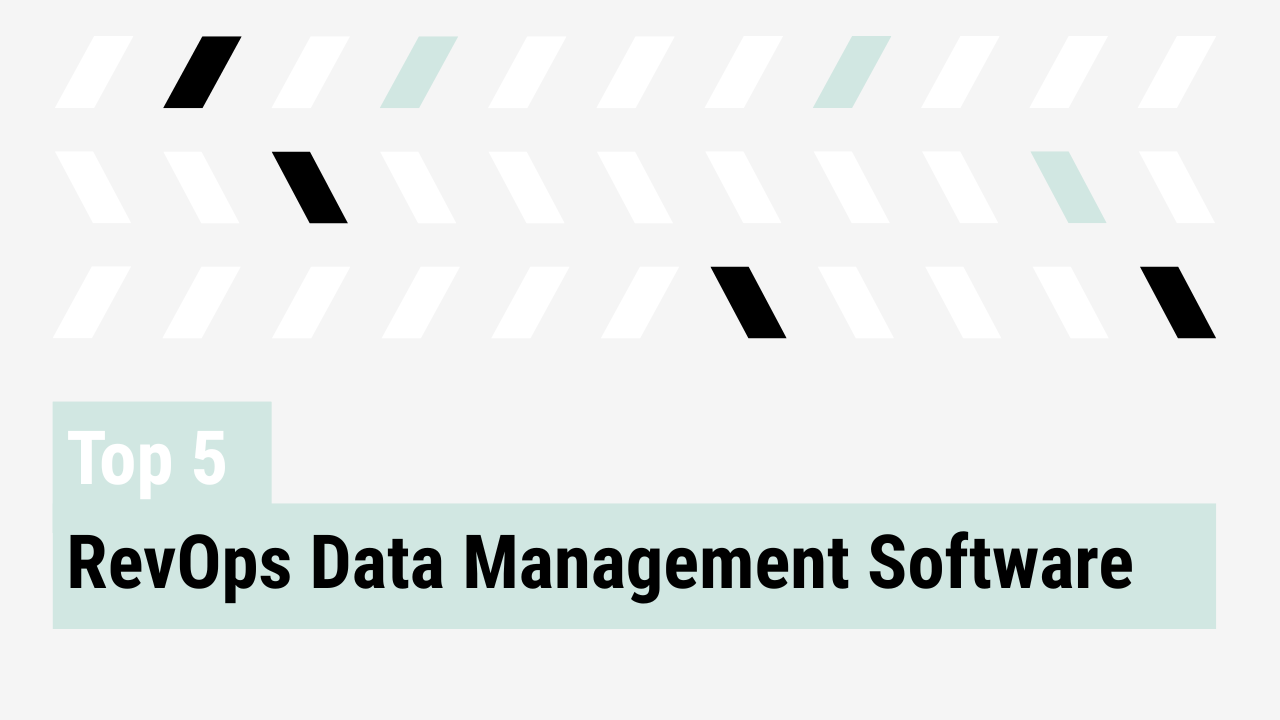Career growth in RevOps depends on making the outcomes of your RevOps projects visible and measurable.
RevOps leaders often operate behind the scenes solving high-leverage problems. When it’s time to share results, though, it’s easy to default to tactical wins or dashboards. To influence the C-suite, you need to connect your work to revenue and cost metrics the business values most.
This post explains how to demonstrate RevOps ROI in terms that matter to Finance, the board, and your leadership team, and how this approach can elevate your influence and visibility.
Assign a business metric to every initiative
Every RevOps project should aim for a measurable outcome. For example: instead of “we cleaned up lead routing,” try “we improved speed-to-lead by 35%, which lifted conversion rate by 12%.”
Tying a business metric to RevOps projects is essential because it transforms operational work into quantifiable business impact. This approach provides clarity to executive stakeholders and creates a direct link between RevOps efforts and strategic outcomes. Metrics allow RevOps leaders to demonstrate their value in concrete terms, enable more informed decision-making, and build trust with Finance, Sales, and the board. By mapping initiatives to measurable results, RevOps functions elevate from tactical execution to strategic leadership.
Here’s a table that outlines key business metrics, what each one means, and the types of RevOps initiatives they commonly support:
| Metric | Definition | Applicable RevOps Initiative(s) |
| Customer acquisition cost (CAC) | The average amount spent to acquire a new customer, including marketing and sales expenses | Lead scoring refinement, routing optimization, campaign targeting improvements |
| Lifetime value to CAC ratio (LTV:CAC) | The value a customer brings over their lifetime compared to acquisition cost | Expansion marketing programs, onboarding workflow enhancements, churn reduction initiatives |
| Pipeline velocity | The speed at which opportunities move through the sales funnel, typically measured in revenue per day | SDR handoff processes, sales playbook updates, territory realignment |
| Sales cycle length | The average time it takes to close a deal from first contact | Pricing and packaging enablement, contract review streamlining, buyer journey alignment |
| Net revenue retention (NRR) | Percentage of recurring revenue retained from existing customers, including upsells and churn | Renewal process design, customer health scoring, expansion playbooks |
| Gross revenue retention (GRR) | Percentage of revenue retained from existing customers, excluding expansion | Churn risk alerting, customer onboarding quality initiatives |
| Conversion rates by stage, segment, or product | Percentage of leads or opportunities advancing to the next funnel stage | Funnel optimization, segmentation strategy revamp, sales enablement content |
| Opportunity creation rate | Rate at which new opportunities are added to the pipeline | Inbound routing rules, SDR prioritization workflows, outbound trigger-based alerts |
| Forecast accuracy | The degree to which revenue forecasts match actual results | Forecast model revamp, pipeline hygiene enforcement, stage definition updates |
| Cost per opportunity | Average cost incurred to generate a sales opportunity | Multi-touch attribution modeling, campaign ROI tracking |
| Sales productivity per rep | Revenue or deals closed per sales rep | Rep dashboards, enablement programs, whitespace identification tools |
Define your work by the outcome it creates. Make the impact easy for Finance and the board to understand.
Measure before-and-after impact like an analyst
Treat RevOps projects like a product launch. Capture baseline data, implement the change, and measure the result.
If you use AccountAim, leverage its ability to snapshot and trend key business metrics before and after each RevOps initiative. This feature allows you to visually demonstrate how metrics like opportunity creation rate, forecast accuracy, or pipeline coverage evolved in response to your changes. For example, you can compare the state of your forecast model one quarter before implementation and one quarter after, showing the improvement in forecast variance. If AccountAim isn’t in use, you can still replicate this approach through manual data exports and side-by-side comparisons. What matters is capturing the baseline, documenting the intervention, and tracking the delta to prove impact.
Illustrative examples:
- Pipeline coverage increased from 1.8x to 2.4x after a new scoring model
- Forecast variance narrowed from ±15% to ±4% post-rebuild
- SDR opportunity rate rose by 8 points following prioritization rollout
Numbers in isolation carry less weight. Trends and improvements provide the evidence that matters.
Focus on what Finance and the board care about
The board isn’t focused on how many dashboards were created. They care about how metrics reflect business health.
Here’s a table of board-relevant business metrics and why they matter:
| Metric | Why it matters to the board |
| Increased revenue | Signals that operational efforts are translating into top-line growth, validating investment in RevOps initiatives |
| Cost savings | Improves margins and capital efficiency, both of which are vital during periods of economic scrutiny or scaling |
| Revenue forecasting accuracy | Enhances strategic planning, helps align resources, and builds investor confidence through predictability |
| Campaign-to-revenue attribution | Justifies marketing and sales investments by showing what’s generating returns |
| CAC and sales velocity improvements | Reflect more efficient acquisition strategies and faster path to revenue, important for GTM optimization |
| Trends in retention, expansion, and cohorts | Provide insight into customer value, long-term growth, and areas requiring retention investment |
| Time saved through automated board reporting | Increases operational leverage and enables leaders to focus time on higher-impact work |
Translate your RevOps projects into business language. This means framing results in terms that executives immediately understand: outcomes, efficiencies, and growth. For instance, instead of saying, “We rebuilt our lead scoring model,” say, “We improved conversion from MQL to SQL by 22%, resulting in a $450K increase in qualified pipeline.” Avoid system-level terminology and focus on what changed for the business, particularly in terms of increased revenue or cost savings. Emphasize what improved, accelerated, or became more predictable.
Build the narrative and make it visible
Executives want stories with impact.
When sharing results, emphasize what changed, by how much, and what that enabled. Use simple visuals, concise summaries, and consistent formats. Share updates wherever senior stakeholders are paying attention (QBRs, retros, Slack channels).
Making your work visible is part of leading effectively. Show your impact with clarity and confidence.
Bring the numbers that matter
Execution matters, but showing the impact of that execution is essential for influence and advancement.
Keep the impact of your RevOps function accessible and measurable. Connect your work to revenue movement, cost savings, and strategic improvements.
Track it. Package it. Share it. Then do it again.
Learn More
Learn more about demonstrating RevOps ROI at RevOps Co-op.
Find out how AccountAim can help you demonstrate the ROI of your RevOps projects.



